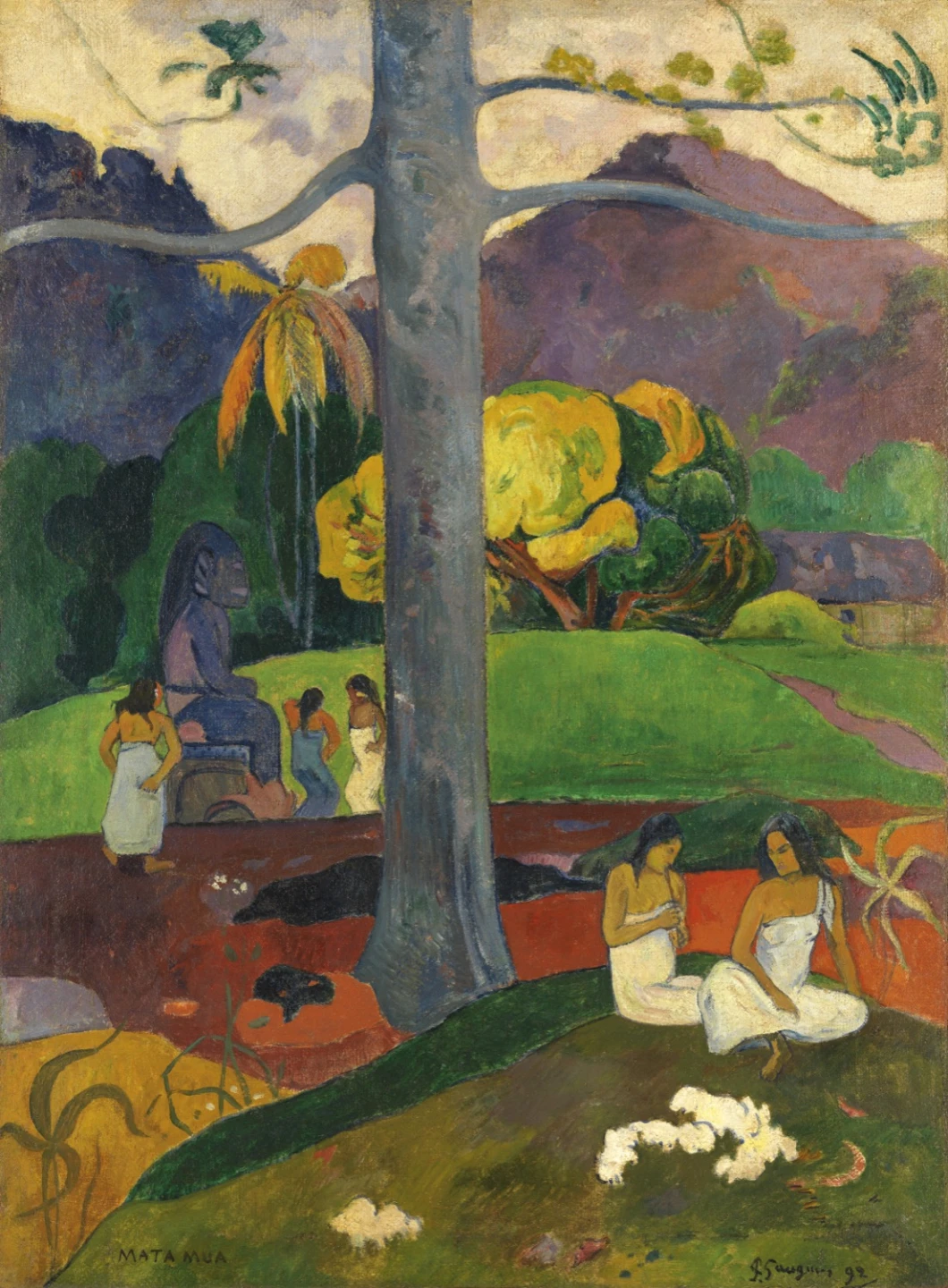Mata Mua: Paul Gauguin (1848-1903)

<p></p>
The French painter goes to Tahiti in June 1891 in search of artistic inspiration in the primitive villages untouched by Western civilisation, or as the artists himself states in his famous phrase “Je veux aller chez les sauvages” (I'm off to live with the savages). His first stay on the island lasts until July of 1893, the period in which Gauguin paints Mata Mua (Autrefois) - in December 1892 - after finding out that the lost paradise he is searching for does not exist as such. In the title of the work, the word autrefois - in English 'in olden times' - nostalgically alludes to a glorious past whose very essence, for Gauguin and many other artists, is represented in primitive art.
The painting, an oil on canvas measuring ninety-one centimetres high and sixty nine wide, has its title written in the bottom left corner in a what is a rough transcription in the French pronunciation of the Tahitian language. It depicts a Tahitian landscape made up of a tree that fills the centre of the composition in which two Maori women are sitting in the foreground, one playing the flute and the other listening. Behind them Guaguin paints a sedate statue of Hina -the Goddess of the moon and rival of the sun God, called Oro- around which three other women are dancing garbed in blue and white dresses. In the background there is a pink mountain rising above the trees.
The strange thing about this work is that the scene is a product of Gauguin's own fiction in which the story of Hina is part of his imagination, as is the form of the statue that wouldn't have existed as such, but would have been inspired by diverse sources.
Mata Mua is exhibited for the first time in Gauguin's individual exhibition in the Durand-Ruel Gallery in 1893. In the sale in 1895, which takes place in the Hotel Drouot and enables Gauguin to embark upon his second and final journey to Oceania, it is one of the paintings that appears to have been sold. However, in actual fact the artist himself, through an intermediary, bids for it. Three years after his death the picture features among his other works in an exhibition in the Salon d’Automne in Paris, and after its appearance it moves around numerous galleries and collections.
On 10 May 1989 the Baron Thyssen-Bornemisza acquires Mata Mua at the Southeby's auction in New York. Just five years previously the Baron had purchased the same work, though on that occasion he purchased it with his friend and collector Ortiz Patino from Bolivia after a provisional agreement between the two that stipulated both would take possession of the work for two years and a half.
After five years have passed an agreement has to be reached: either one buys the other out or it goes on auction. Ortiz Patino rejects Baron Thyssen's first offer, deciding to bid for it at auction. The initial cost when it was bought between them was 3,800,000 dollars, now the new value has reached 24,200,000, the final price it is acquired for to form part of the Thyssen-Bornemisza Collection.
Gauguin's emblematic work is exhibited practically during the whole month in the Sala de Protocolo of the Centro de Arte Reina Sofía.
Artists
Organised by
Dirección General de Bellas Artes y Archivos
Image gallery
